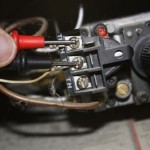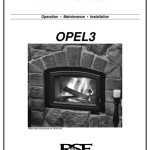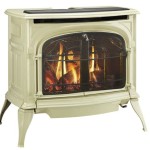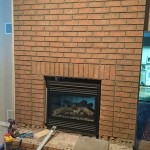Types of Natural Stone Fireplaces
Natural stone fireplaces offer a timeless aesthetic, adding warmth, character, and value to any home. The durability and unique beauty of natural stone make it a popular choice for homeowners seeking a focal point that will last for generations. The selection process, however, involves understanding the different types of stone available, their characteristics, and the impact they have on the overall design and functionality of the fireplace.
Choosing the right stone for a fireplace involves considering factors such as color, texture, pattern, durability, and cost. Furthermore, the architectural style of the home and the surrounding décor should influence the stone selection to create a cohesive and aesthetically pleasing environment. The following provides an overview of common types of natural stone used in fireplace construction, highlighting their distinct properties and advantages.
Granite Fireplaces: Strength and Sophistication
Granite is an igneous rock known for its exceptional hardness and resistance to heat and scratching. Its composition includes minerals such as quartz, feldspar, and mica, which contribute to its varied color palette, ranging from light grays and pinks to deep blacks and greens. The granular texture of granite adds visual interest, and its polished surface provides a sleek and sophisticated look.
The durability of granite makes it an excellent choice for fireplaces that experience frequent use. It can withstand high temperatures without cracking or discoloration. Granite is also relatively easy to clean and maintain, requiring only occasional wiping with a damp cloth. Its non-porous nature makes it resistant to staining and moisture absorption, further enhancing its longevity.
Granite fireplaces are often associated with modern and contemporary designs due to their clean lines and polished surfaces. However, the versatility of granite allows it to be incorporated into various architectural styles. For instance, a honed or textured granite can complement a rustic or traditional setting. The cost of granite varies depending on the color, rarity, and complexity of the fabrication, generally placing it in the mid-to-high price range.
From a practical standpoint, granite requires professional installation due to its weight and the precision needed for cutting and fitting. Sealing granite is recommended, although not always necessary, to further protect it from potential stains and enhance its natural luster. Its inherent thermal mass allows it to retain heat, contributing to the overall efficiency of the fireplace.
Marble Fireplaces: Elegance and Timeless Appeal
Marble is a metamorphic rock formed from limestone or dolomite through heat and pressure. Its characteristic veining, caused by mineral impurities, gives each slab a unique and artistic appearance. Available in a wide range of colors, including white, gray, black, green, and pink, marble offers versatility in design and aesthetics.
The smooth, polished surface of marble exudes elegance and luxury, making it a popular choice for formal living rooms and upscale interiors. Its reflective properties enhance the ambient light, creating a bright and inviting atmosphere. Marble fireplaces are often associated with classical and traditional designs, but they can also complement modern interiors with the right selection of color and veining.
While marble is relatively durable, it is more porous than granite and susceptible to staining from acidic substances. Regular sealing is essential to protect its surface from spills and moisture absorption. Scratches and etching can also occur over time, particularly in high-traffic areas. Therefore, careful maintenance is required to preserve the pristine appearance of a marble fireplace.
The cost of marble varies considerably depending on the rarity, color, and quality of the stone. High-end marbles, such as Calacatta and Statuario, are highly prized for their distinctive veining and bright white background, commanding premium prices. Installation of marble fireplaces requires skilled craftsmanship to ensure precise cuts and seamless joints. The elegant aesthetic and timeless appeal of marble make it a worthwhile investment for homeowners seeking a luxurious and sophisticated fireplace.
Considerations for using marble include its susceptibility to heat damage. While it can withstand moderate temperatures, excessive heat can cause discoloration or cracking. Therefore, it is crucial to ensure proper ventilation and fireproofing around the fireplace to prevent potential damage to the marble surround.
Limestone Fireplaces: Natural Warmth and Rustic Charm
Limestone is a sedimentary rock composed primarily of calcium carbonate. Its natural, earthy tones and subtle textures create a warm and inviting atmosphere. Limestone is available in a variety of colors, ranging from light beige and cream to gray and brown, making it a versatile choice for both traditional and contemporary designs.
The porous nature of limestone gives it a natural, matte finish that softens the harshness of modern interiors. Its ability to be easily carved and shaped allows for intricate detailing and custom designs. Limestone fireplaces are often associated with rustic and country-style homes, but they can also complement minimalist and contemporary spaces with the right finishing and design elements.
While limestone is relatively durable, its porosity makes it more susceptible to staining and moisture absorption than granite or marble. Regular sealing is essential to protect its surface from spills and environmental factors. Limestone is also softer than granite and marble, making it more prone to scratching and chipping. However, these imperfections can add to its natural character and charm.
The cost of limestone is generally lower than granite and marble, making it an affordable option for homeowners seeking a natural stone fireplace. Installation of limestone fireplaces requires careful handling to avoid chipping or cracking. Its relatively lightweight nature makes it easier to work with than heavier stones like granite and marble.
Limestone's thermal properties are similar to those of marble. It can retain heat, contributing to the overall efficiency of the fireplace. However, it is essential to ensure proper fireproofing and ventilation to prevent damage from excessive heat. The natural warmth and rustic charm of limestone make it a popular choice for homeowners seeking a cozy and inviting fireplace.
Slate Fireplaces: Modern and Earthy Aesthetics
Slate is a fine-grained metamorphic rock derived from shale or mudstone. Its distinctive layered appearance and natural cleft give it a unique texture and visual appeal. Slate is typically dark gray or black, but it can also be found in shades of green, purple, and red. Its durability and resistance to heat make it a suitable material for fireplace surrounds and hearths.
The natural cleft of slate provides a non-slip surface, making it a safe option for hearths and areas around the fireplace. Its dark color and earthy texture create a modern and sophisticated look, complementing a variety of architectural styles. Slate fireplaces are often associated with contemporary and minimalist designs, but they can also be incorporated into rustic and industrial settings.
Slate is relatively non-porous, making it resistant to staining and moisture absorption. However, it can be susceptible to scratching and chipping, particularly along the edges. Regular cleaning with a mild detergent and water is sufficient to maintain its appearance. Sealing is recommended to further protect its surface and enhance its natural color.
The cost of slate is generally comparable to that of limestone, making it an affordable option for homeowners seeking a natural stone fireplace. Installation of slate fireplaces requires careful handling to avoid cracking or chipping. Its layered structure can make it challenging to cut and shape, requiring skilled craftsmanship.
Slate's thermal properties are similar to those of granite and marble. It can retain heat, contributing to the overall efficiency of the fireplace. However, it is essential to ensure proper fireproofing and ventilation to prevent damage from excessive heat. The modern and earthy aesthetics of slate make it a popular choice for homeowners seeking a unique and durable fireplace.
Fieldstone Fireplaces: Rustic and Natural Appeal
Fieldstone refers to naturally occurring stones found on the surface of the earth, typically in fields or along riverbeds. These stones vary in size, shape, and color, depending on the geological region. Common types of fieldstone include granite, limestone, sandstone, and river rock. The irregular shapes and natural textures of fieldstone create a rustic and organic appearance.
Fieldstone fireplaces are often associated with traditional and country-style homes. Their natural, unrefined aesthetic adds character and charm to any space. The unique variations in color and texture make each fieldstone fireplace one-of-a-kind. Fieldstone fireplaces can be constructed using dry-stacking methods, where the stones are fitted together without mortar, or with mortar to create a more stable structure.
The durability of fieldstone varies depending on the type of stone. Granite fieldstone is highly durable and resistant to weathering, while limestone fieldstone is more susceptible to erosion and staining. Regular cleaning and sealing are essential to protect the surface and maintain its appearance.
The cost of fieldstone varies depending on the availability and type of stone. Locally sourced fieldstone is generally more affordable than stones that need to be transported over long distances. Installation of fieldstone fireplaces requires skilled craftsmanship to ensure proper fitting and stability. The irregular shapes and sizes of the stones can make it a challenging and time-consuming process.
Fieldstone fireplaces are inherently non-uniform, which contributes to their character and natural beauty. Due to their composition and varying densities, they can provide inconsistent heat retention. Planning for proper draft and firebox design is essential for efficient function. Proper application and selection of fieldstone can result in a durable and aesthetically pleasing fireplace.

Natural Stacked Stone Veneer Fireplace Ideas

Why Natural Stone Is The Best Choice For Your Fireplace

17 Modern Stacked Stone Fireplace Ideas For Your Home

9 Indoor Fireplaces That Will Bring Warmth And Charm To Your Home Swenson Granite 100 Natural Stones

Creative And Beautiful Fireplace Design Ideas Our Top Picks Stone Center

Cast Stone Fireplaces So Much Better With Age

How To Choose The Right Fireplace Stone

Remodel Your Fireplace In Natural Stone Use

Professional Stonework Stone Fireplace Surround Hearths

Natural Stone Fireplaces Mcmonagle
Related Posts








